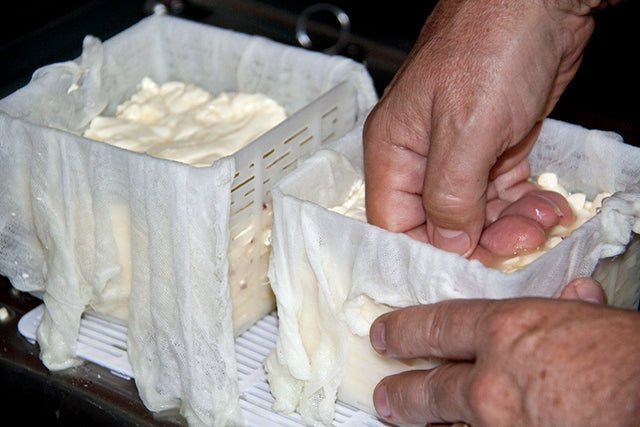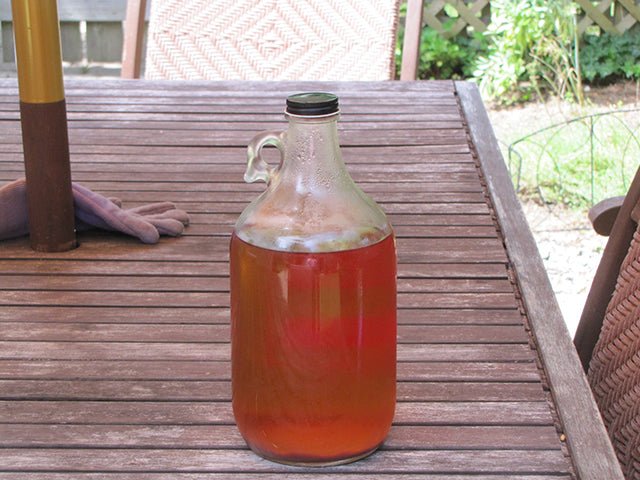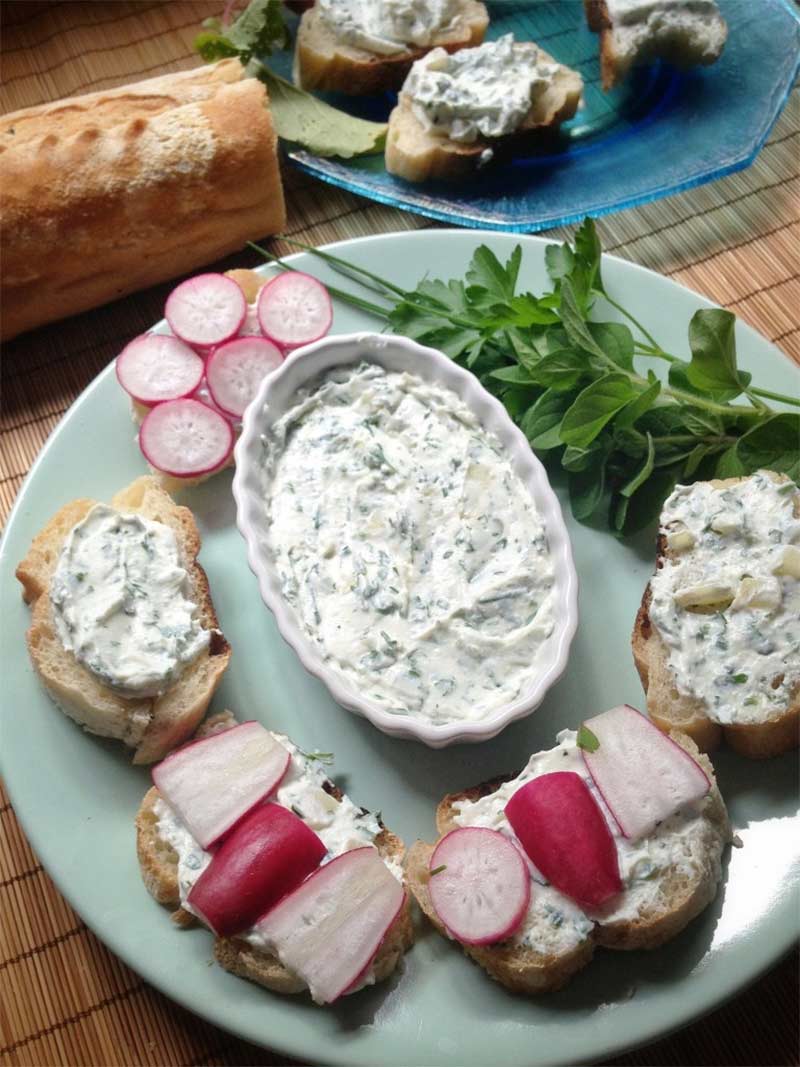 |
| Andy Cumberland with his Drunken Nut Cheese |
Back to Basics Down Under
I asked Andy to send me a picture of himself making cheese and I received this –
I didn’t get the time to make cheese this weekend. I did make home
grown pesto, bread rolls, beef jerky and Thai chicken sausages.
Is that all?!!
I had begun my correspondence with Andy after he first wrote to us from Brisbane, Australia (August 2013 Moosletter), I asked him to tell us more about his various projects:
There’s quite a bit happens at my place these days – I bake breads, make cheese, preserves and jams, etc. and also make my own spirits which I have been trying to do without the artificial flavors that most folks use.
I’m slowly establishing my small urban garden in Brisbane to grow veggies, etc. and the crowning glory will be if I can get my aquaponics setup working (I’ve left it because I can’t stock the fish until December – which is our summer) although it is probably more than half built now.
It’s the combinations that I love most – between baking, sausage making, growing lettuce and tomatoes and making chili jam – I can scratch make a whole burger! I also did a mean spinach and feta pie recently that used home grown rainbow chard and my Purple Onion Feta. You’d pay a small fortune for stuff like that (at least over here in Brisbane).
 |
| Andy’s label for his Drunken Nut Cheese |
What got you interested in making cheese?
I had a friend who lived in a shed while he
established a new, organic eco farmstead – his goats’ fetta was really
good. Then I started thinking, “Hang on! If he can make this in a dirty
old shed, imagine what I could do in my proper kitchen!”
And so the
journey began. We formed a small artisan group which was what started
me working on the bread, sausage and growing fresh food in small places.
I happened to love Jarlsberg, which of course got me hooked on
variations of the recipe Jim posted.
What are your goals?
My aim is to produce 3 really great cheeses pretty constantly. I
want a soft cheese, a Jarlsberg/Swiss style and a bloomy rind.
I
started with the Feta because it is a great beginner’s cheese. This
progressed into Purple Onion Feta which my wife loves. There MUST be a
constant supply of that now. I’ve made it every two or three weeks for
18 months. I tried a few versions along the way, including a chili
variety but the purple onion was the favorite.
Then I started on the Jarlsberg. Oh course, I had to choose a cheese that was
meant to be a secret recipe! I did a few different versions of
Jarlsberg – a thermophilic one and Jim’s mesophilic version.
Originally, I was wrapping them in wax while aging them but I
discovered (after 5 months of aging!) that the wax stops the cheese
expanding so the large size bubbles can’t form. Having said that, the
taste was quite wonderful. I made that one quite a few times and it has
become affectionately known as Brisbane Nutty White because I only use a
local pasteurized but not homogenized milk and the taste is quite
“nutty.”
 |
| Drunken Nut Cheese being “rubbed” with Andy’s homemade Hazelnut liquor. |
The desire to age without waxing led me
across the idea of washed rind cheeses. There is a group of monks in France who made cheese and washed it in walnut liquor. Since I make my
own hazelnut liquor, I am giving that a go. That particular one is
around 2 months old now but the rind is staying quite moist and not
cracking. Between the nutty liquor and the nutty cheese flavor I am
hoping to produce a very nutty taste. That one has been named The
Drunken Nut and even has its own label! (Which will be wasted if the
cheese doesn’t work).
From Jarlsberg, I got the idea
to try a Farmhouse Cheddar with proprionicic starter as well. It was quite
nice but not exceptional enough to make regularly.
 |
| Andy’s Camembert |
A
few weeks ago I did my first batch of Camembert. My aim once I get the
Camembert working is to move onto Jim’s Camblu. Another cheese making
friend of mine and I have discovered that the mold doesn’t bloom on
the surface for at least 10 days here in Brisbane. I’m guessing either
the milk is slightly different or more likely because it is so hot here
and we have to put it in the fridge, the fridge temperature is too cold.
Anyway, that’s been the journey so far.
 |
| Andy teaches photography classes through his business – Photos L’Amour |
Andy’s Ozzie Recipe for Purple Onion Feta
Heat one gallon (4 litres) of whole milk to 99F (37C).
Add 1/2 teaspoon (2 ml) of calcium chloride.
Add starter culture (1/8 of a teaspoon of mesophilic or 1/2 packet). Stir it in for a few minutes then add 1/4 teaspoon liquid rennet.
Keep it at 99F (37C) for 90 minutes or until you get a clean break (you can see the curd come away from the side of the pot – and it is rubbery when you put your finger in).
Cut into 1/2 inch bits (there’s a fun art in curd cutting) and let it rest for 1 hour, maintaining the 99F (37C) temperature.
 |
| Feta curds |
After the hour, stir gently each 5 minutes for 30 minutes, maintaining the temperature.
Line a mold (any of our basket molds will do) with cheese cloth and scoop curd into it.*
For Purple Onion Feta, I chop a purple/salad/Spanish onion into four and then run it through a small food processor with a tablespoon of water.
Lay down a layer of curd and then a small layer of onion fragments and repeat until the feta mold is full. Feta is a fresh cheese and is consumed relatively quickly. Otherwise, I would microwave the onion on high to get rid of any unwanted bacteria.
 |
| I very gently compact the curd layers so that the purple onion doesn’t wash all over the place as I add more layers. |
Let drain for 3 hours.
Flip it over and leave to drain overnight (or for 12 hours).
Soak in a brine (1/4 cup (60 grams) of cheese salt to 2 cups of whey** and 1/2 teaspoon of vinegar) for 5 hours. (I often only use 1/8 cup (30 grams) of salt.)
I take mine out before I eat it and rinse it in filtered water or whey.
They say it lasts for 5 weeks in the fridge but I wouldn’t know. My family eats it too fast!
Like Jim says, it is a lot of fun to experiment with existing cheese recipes. Purple Onion Feta has proved a real hit with workmates, friends and family.
* As you can see, I make two blocks at a time. One is just plain eaten
(and pretty quickly I might add!) and the other is used to make my
Persian Feta which is a secret recipe that includes garlic and balsamic
vinegar. The reason the recipe is secret is because I really just do
it “by eye.” I throw some garlic into olive oil and then add the
balsamic until the amount looks about right. It’s a recipe I can’t
give away – literally, because I don’t actually have a recipe. (Note: I promise you I will get the recipe out of Andy for us if it’s the last thing I ever do!)
I use whey instead of water for the brine – the PH comes out at an equal level to the cheese so the curd doesn’t fall apart like many people experience.
 |
| Andy’s “highly technical, self made cheese press which consists of 2 bread boards and 4 bolts (not counting the milk bottle full of water and the dog food can that is hidden in the cheese mould.” |
There is a great website called Brisbane Local Food where Andy started a “group” last December to discuss cheese making issues. He has posted a lot of good information about his various projects and recipes for his cheeses, so it is well worth reading.
His opening post reads in part:
Bacterial Brothers and Sisters: I wanted a group where we could freely use those bacterial words – mesophylic, thermophylic, flora danica, proprionic shermanii, etc. without fear of judgement or nerdy ridicule!
Here is my oath as an amateur Fromager: “I promise to happily share my crazy cheese experiments, regardless of whether they succeed or fail. (Often a good balls-up can be quite helpful to others as well.)
I vow that if I find something that tastes fantastic, I will share it with my Fromage Friends, my Brothers in Bacteria, my Cheesy Colleagues.
This be my Bacterial Oath.”
(Note: A few months after I posted this, Andy made an instructional video showing the entire process, start to finish, for making his Purple Onion Feta. Click here.)
















































































































































